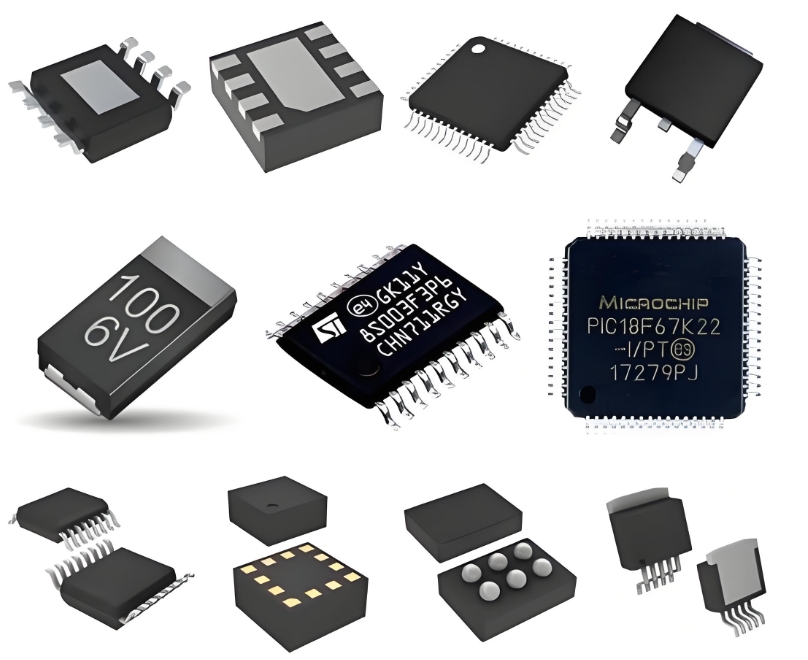In the realm of modern electronics, the transition from mechanical to digital components has unlocked new levels of precision, reliability, and integration. At the forefront of this shift is the digital potentiometer (digipot), a device that emulates the function of a traditional potentiometer but is controlled digitally. The **AD5204BRZ100**, a quad-channel 100kΩ digital potentiometer from Analog Devices, stands as a quintessential component for engineers designing advanced analog systems. This guide provides a comprehensive overview of its functionality, key features, and primary applications.
**What is the AD5204BRZ100?**
The AD5204BRZ100 is a **solid-state, digitally controlled variable resistor**. The "Quad" designation indicates it integrates four independent 100kΩ potentiometers into a single 24-lead SOIC package. Each potentiometer consists of a fixed resistor with a wiper contact that can be digitally positioned along its length, providing a programmable resistance value (RWB) between zero and its nominal 100kΩ value. This integration is crucial for space-constrained designs requiring multiple adjustable gain or bias points.
**Key Features and Specifications**
The device's architecture is built around a versatile **3-wire serial peripheral interface (SPI)** that allows a microcontroller or digital processor to set the wiper position for each channel. The wiper position for each of the four potentiometers is determined by a 7-bit word, granting **128 distinct wiper tap positions** and a theoretical resolution of 0.79% (100kΩ/127). This provides fine-grained control over the resistance value.
Other critical specifications include:
* **Nominal Resistance:** 100 kΩ per channel.
* **Interface:** SPI-compatible serial data input.
* **Supply Voltage:** A wide range from **2.7 V to 5.5 V**, making it compatible with both 3.3V and 5V systems.
* **Temperature Range:** Operates over the industrial temperature range of -40°C to +85°C.
* **Non-Volatile Memory (NV):** Unlike the standard AD5204, the AD5204BRZ100 does not include non-volatile memory. The wiper position is reset upon power-up and must be set by the host controller.
**How Does It Work?**
The internal simplified structure of each potentiometer is a series of 127 resistors with analog switches connected to the wiper. The 7-bit RDAC register's value controls which switch is closed, connecting the wiper (W) to a specific tap point on the resistor ladder between terminals A and B. This creates two variable resistors: RWA and RWB. The SPI interface is used to load a channel address and a data value, updating the wiper position almost instantaneously.

**Primary Applications**
The AD5204BRZ100 finds its use in any application requiring programmable resistance or voltage division. Its quad-channel nature makes it exceptionally useful for multi-parameter systems.
1. **Programmable Gain Amplifiers (PGAs):** Each potentiometer can be used to set the gain of an op-amp circuit (e.g., inverting or non-inverting configurations), allowing for software-controlled amplification stages.
2. **Analog Signal Conditioning and Calibration:** It is ideal for **precise calibration and tuning** of sensor signals, bias points, and reference voltages in systems like instrumentation, automotive electronics, and industrial control.
3. **Volume Control and Audio Processing:** In audio equipment, the four channels can manage volume balance, tone control, or multi-channel audio level adjustment without the noise and wear associated with mechanical pots.
4. **Software-Controlled Parameter Adjustment:** It effectively replaces manual trimmers in systems where adjustments need to be made remotely or during an automated calibration routine.
**Advantages Over Mechanical Potentiometers**
* **Enhanced Reliability:** No moving parts to wear out, ensuring a long operational lifespan.
* **Resistance to Environmental Factors:** Immune to dust, moisture, and vibration.
* **Space Efficiency:** Integrating four pots into one IC saves significant board space.
* **Remote Control and Automation:** Resistance values can be programmed and changed dynamically via software, enabling adaptive systems and remote configuration.
**ICGOODFIND Summary**
The **AD5204BRZ100** is a highly integrated and versatile solution for digital analog adjustment. Its **quad 100kΩ architecture**, controlled via a simple **SPI interface**, provides designers with a compact and reliable means to replace mechanical potentiometers. It excels in applications demanding **multi-channel programmability**, such as complex signal conditioning chains, automated test equipment, and sophisticated audio systems. While the absence of non-volatile memory requires a controller to set its state on power-up, this is a minor trade-off for its performance, integration, and control capabilities, making it a superior choice for modern electronic design.
**Keywords:** Digital Potentiometer, SPI Interface, Programmable Gain Amplifier, Signal Conditioning, Analog Devices
